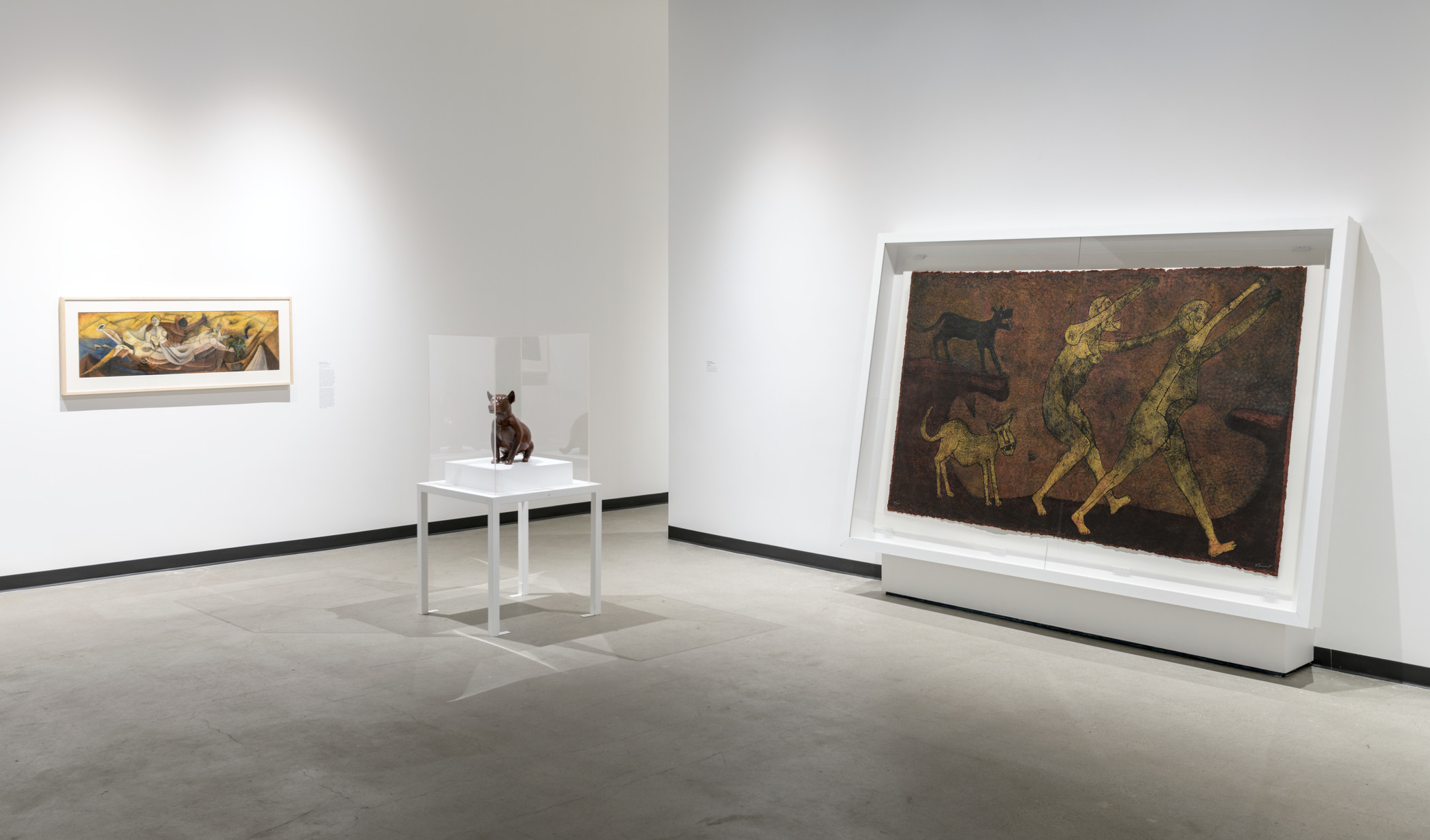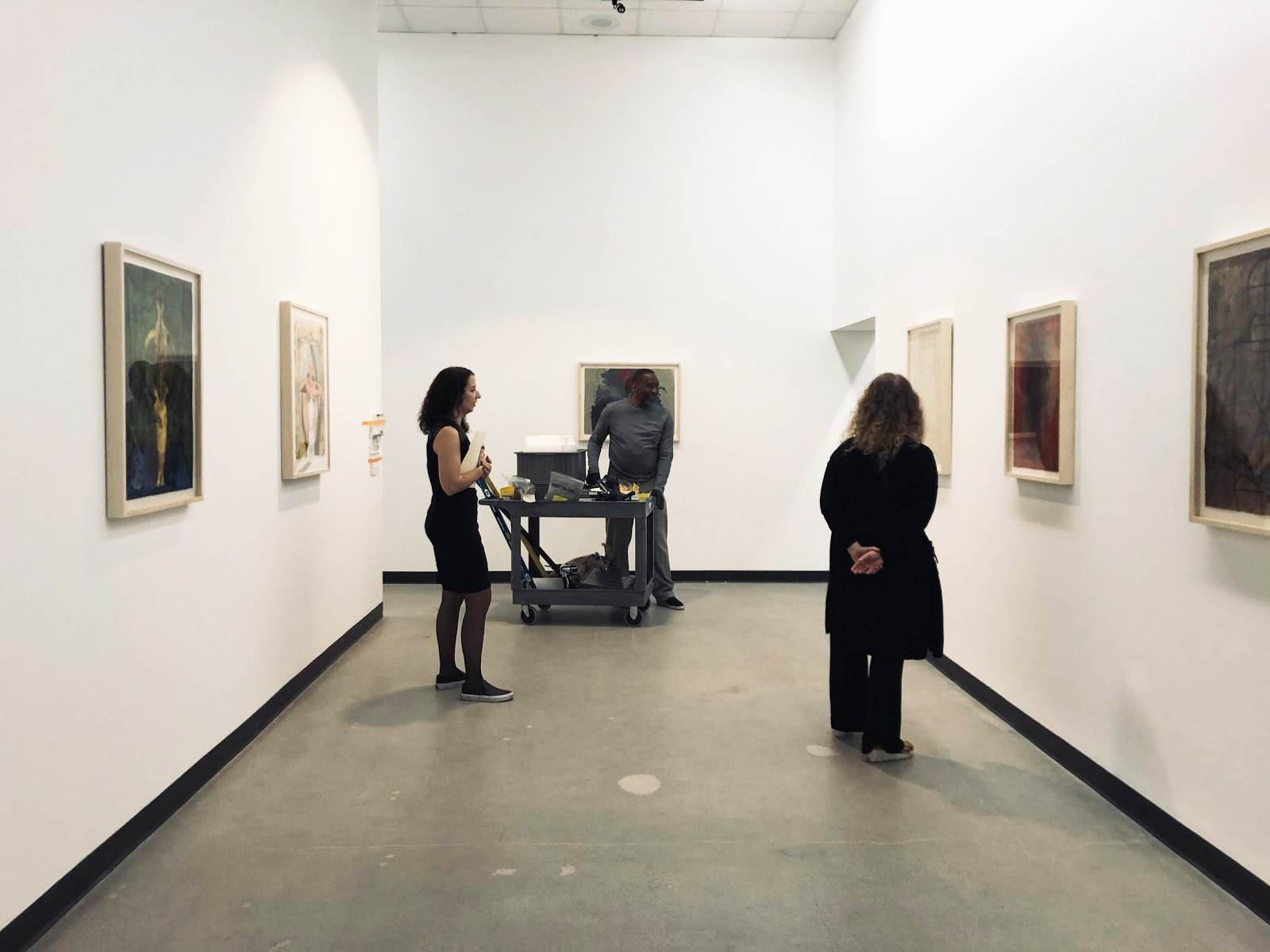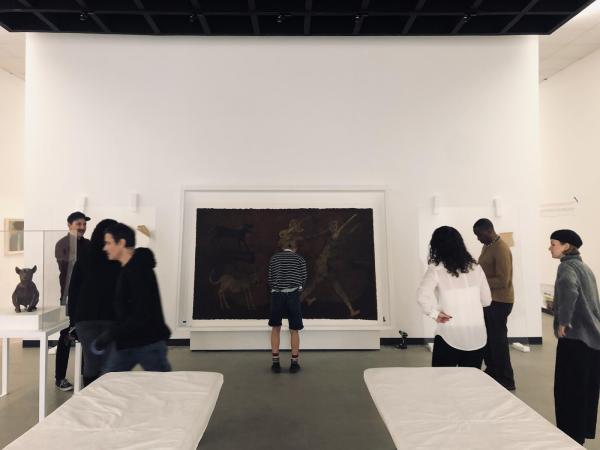I first encountered Rufino Tamayo’s artwork while managing an art gallery in San Antonio, Texas that specializes in Latin American, Latinx, and Texas art, where I became fascinated with the richly textured aspect of many of his prints. I consider myself fortunate to have worked with Tamayo’s Mixografía® prints in Texas, but I am even more fortunate that my interaction with his work didn’t stop there.
Since joining the team as LACMA’s Emerging Art Professionals (LEAP) Fellow in August of 2019, I have been based in the Director’s Office learning how Michael Govan, CEO and Wallis Annenberg Director, manages it all. The fellowship program—part of the Diversifying Art Museum Leadership Initiative funded by the Walton Family Foundation and the Ford Foundation—also offers opportunities to shadow and learn from other museum professionals. At LACMA, these opportunities are translated into “mini-residencies” in various departments to gain a more holistic understanding of curatorial work and management.
Three months into my LEAP Fellowship, I met with Rachel Kaplan, assistant curator of Latin American Art, to discuss our current exhibition, Rufino Tamayo: Innovation and Experimentation (on view through July 11, 2020), and the possibility of a curatorial residency. The exhibition highlights Tamayo’s engagement with the human figure and his revolutionary printmaking methods. With a guiding hand from Ilona Katzew, curator and department head of Latin American Art, Rachel brought to life her first exhibition at LACMA’s satellite gallery at Charles White Elementary School.

Born in Oaxaca and raised in Mexico City, Tamayo (1899–1991) was an inventive artist known for his paintings, murals, and works on paper. His departure from conventional art processes and his experimentation with new printmaking techniques led to a prolific career as a graphic artist. The exhibition focuses on Tamayo’s prints and includes a variety of lithographs, watercolors, woodcuts, etchings, and Mixografía® prints. Mixografía® is a printmaking technique created in the 1970s by the Taller de Gráfica Mexicana in response to Tamayo’s desire to add volume and dimension to his prints. To achieve this, Tamayo was aided by Lea and Luis Remba, who were the workshop’s owners and invented the technique.

Exhibitions are brought together through the combined efforts of several departments including Registration and Collections, Conservation, Art Preparation and Installation (API), Exhibition Design and Production, Graphics, Publications, and, of course, Curatorial. Even when curators plan out every detail of an exhibition in advance, as Ilona told me, curators also have to be creative and solve issues on the spot as they arise during an installation process. In this case, Rachel slightly departed from the original exhibition layout to enhance the visual experience, create a more balanced presentation, and better enable visual connections between works.
Every show presents its own unique challenges. For example, the work Two Personages Attacked by Dogs required special attention due to its large size and fragile nature. Tamayo worked on the print over a period of three years. Rachel shared that “Tamayo was very interested in creating a print that could be the size of a mural. This idea epitomized the expansive way Tamayo thought about printmaking, which is why it was so important to include.” Rachel worked closely with LACMA’s Paper Conservation lab headed by Janice Schopfer, senior conservator, who spent several months researching and conserving the Mixografía® print to prepare it for the exhibition.

A selection of five Mesoamerican sculptures from LACMA’s collection is also included in the exhibition. Tamayo was deeply interested in ancient Mexican art, which he collected and used as inspiration. Rachel paired a ceramic Colima dog (200 BCE–500 CE) alongside the large scale print Two Personages Attacked by Dogs to highlight some of the works’ affinities.

My curatorial residency with Rachel offered me the opportunity to learn how her extensive knowledge of Tamayo’s work and theoretical background could come together in an exhibition to be enjoyed by the general public. During the two-week installation period, I shadowed a range of museum professionals and learned about the different aspects required to set up an exhibition. I also understood how curators, not unlike artists, become creators when they choose their subjects and the ways they share them with larger audiences.
Rufino Tamayo: Experimentation and Innovation is open to the public on Saturdays, 1–4 pm, through July 11, 2020. Charles White Elementary School is located at 2401 Wilshire Boulevard, Los Angeles, CA 90057. Enter the gallery at the corner of Park View and Wilshire Boulevard.



